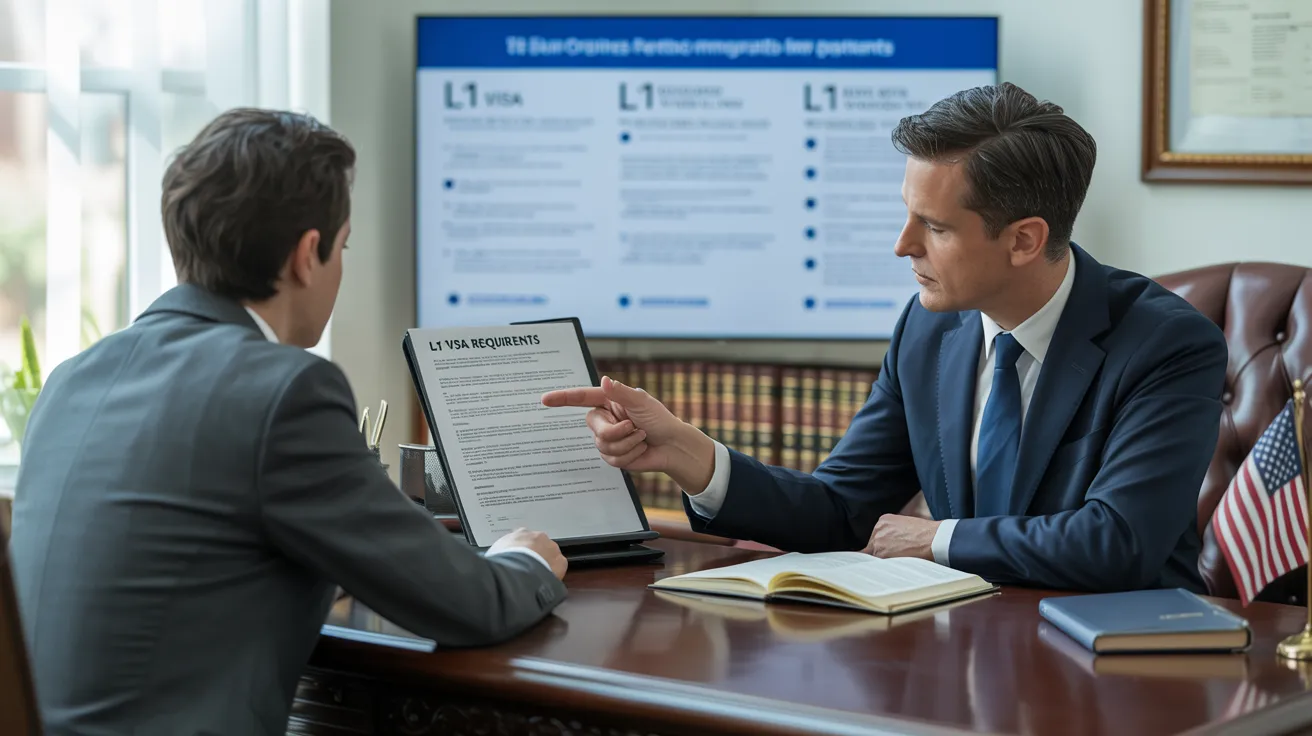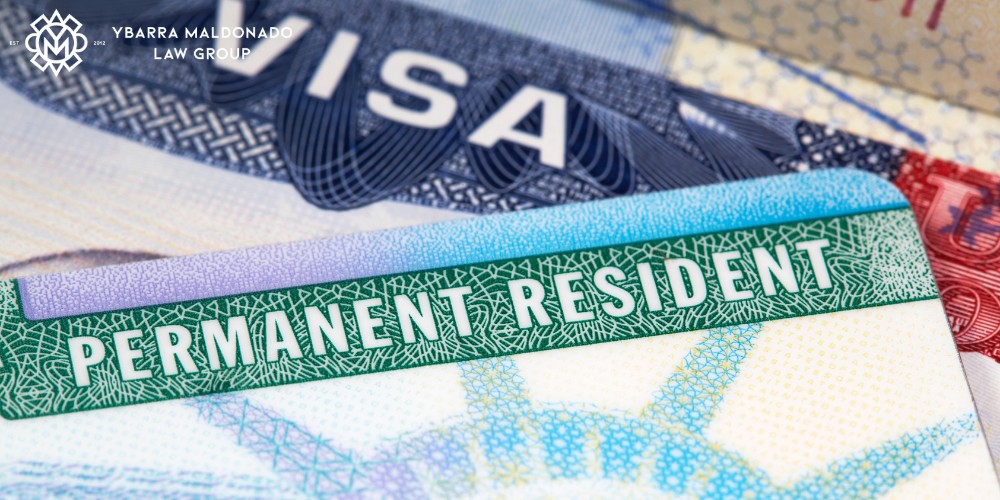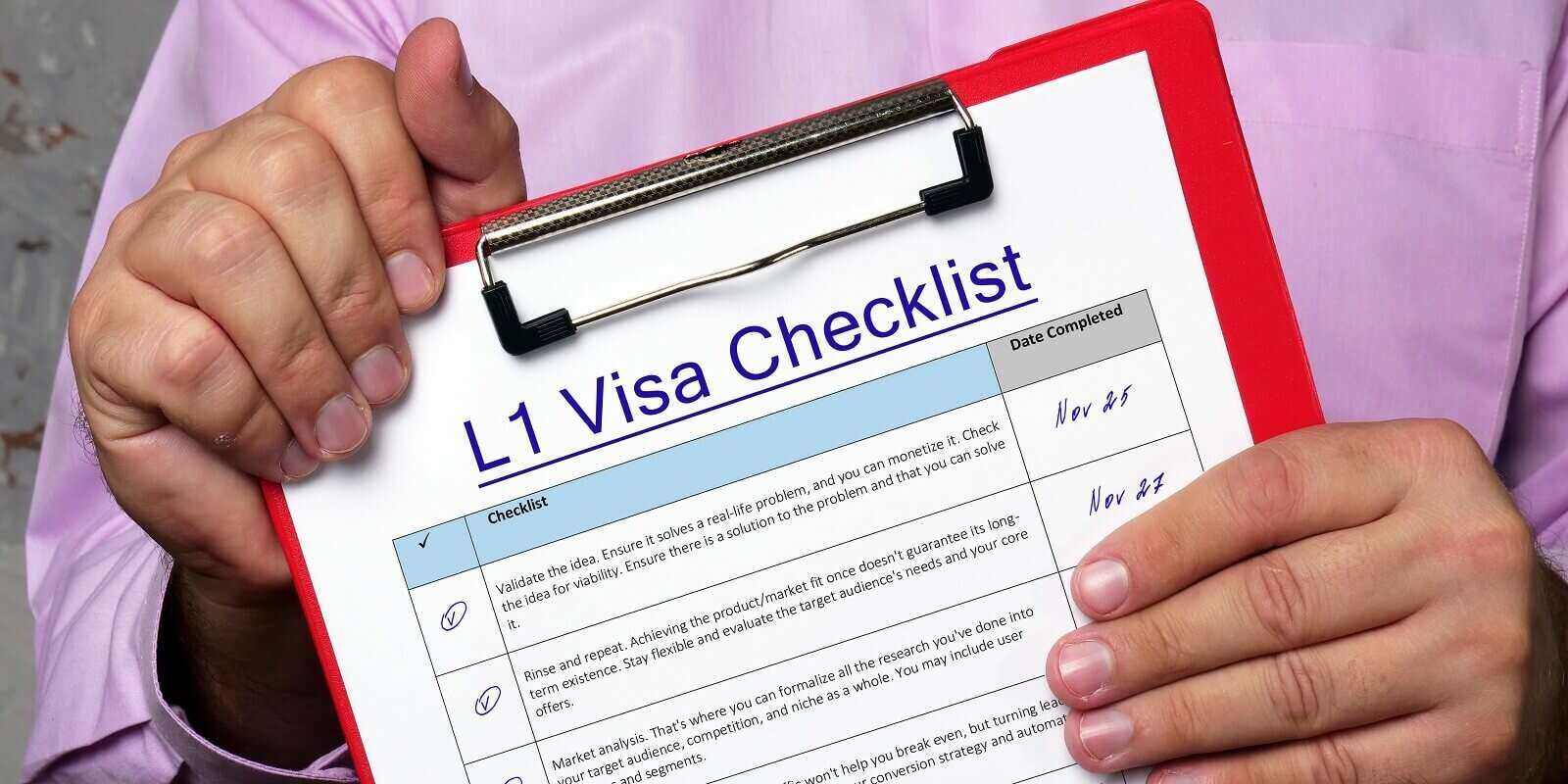Unlocking Opportunities: A Comprehensive Overview to the L1 Visa Process
The L1 visa procedure offers an important path for international companies seeking to transfer crucial employees throughout boundaries. Understanding the nuances of eligibility criteria, the distinctions in between L-1A and L-1B visas, and the intricacies of the application process can greatly influence a candidate's success. However, steering this facility landscape is not without its obstacles, and cautious interest to paperwork and employer sponsorship is important. As we explore the vital components of this procedure, the strategies for overcoming potential challenges will come to be obvious, disclosing exactly how notified preparation can open a globe of possibilities.
Comprehending the L1 Visa
Understanding the L1 visa entails acknowledging its value as an important tool for multinational business looking for to move competent staff members in between international offices. This non-immigrant visa category helps with the activity of executives, supervisors, and specialized expertise workers to the United States, thereby making it possible for organizations to keep operational continuity and harness worldwide ability effectively. The L1 visa is divided into 2 primary categories: L-1A for managers and executives, and L-1B for workers having specialized knowledge.The L1 visa serves an essential function in boosting a business's one-upmanship in the international market - L1 Visa Requirements. By enabling companies to move their key employees, services can assure that crucial jobs are handled by qualified individuals that are currently accustomed to the business's society and functional processes. This internal transfer mechanism not only promotes knowledge sharing however also promotes technology and cooperation across borders.Moreover, the L1 visa is typically favored for its fairly straightforward application procedure contrasted to various other visa classifications, as it permits for dual intent, permitting holders to pursue permanent residency while on a momentary job visa. This function makes the L1 visa specifically appealing for both employers and staff members, as it simplifies the path for proficient professionals to develop long-term residency in the USA
Qualification Criteria
Eligibility for the L1 visa hinges on several vital standards that assure both the employee and the employer satisfy certain certifications. This non-immigrant visa is created for international business to transfer workers from consular services to united state counterparts.Firstly, the company needs to be a certifying company, that includes a moms and dad firm, branch, associate, or subsidiary of an U.S. business. The business needs to have been doing service for a minimum of one year both in the united state and abroad. This ensures that the firm has sufficient operational security and a legitimate presence.Secondly, the employee has to hold a managerial, executive, or specialized understanding position. For L1A visas, the applicant must show managerial or executive qualifications, while L1B visas concentrate on specialized expertise pertaining to the organization's products, solutions, or processes. Additionally, the worker should have worked for the foreign entity for at the very least one constant year within the last three years prior to their application.Lastly, the employee's function in the united state need to align with their previous placement, guaranteeing that their skills and know-how are leveraged for the firm's advantage.
Sorts Of L1 Visas
The L1 visa category comprises 2 primary types designed to help with the transfer of workers within multinational business: the L1A visa for managers and execs, and the L1B visa for employees with specialized understanding. Each kind serves unique objectives and has specific qualification criteria.The L1A visa is tailored for individuals who hold supervisory or executive placements within a company. This visa makes it possible for high-level workers to move to an U.S. branch, subsidiary, or associate of the exact same organization. Candidates for the L1A visa must show that they have been used in a managerial or executive capability for at least one continual year within the past three years before their application. Furthermore, this visa provides a longer period of stay, initially approved for 3 years, with the possibility of extensions for as much as 7 years.In contrast, the L1B visa is meant for experts with specialized expertise pertaining to the firm's products, services, or procedures. To certify, candidates have to verify that their know-how is important to the organization and that they have benefited at the very least one continual year within the last three years in a role that required this specialized knowledge. The L1B visa is at first provided for three years, with expansions offered for as much as five years.Both visa types are essential for companies seeking to enhance their worldwide procedures by leveraging proficient employees, thus promoting innovation and efficiency within the united state market.
Application Process
Guiding via the L1 copyright procedure involves numerous important steps that need to be carefully complied with to ensure a successful end result. The procedure starts with the U.S. employer, that have to first develop eligibility by demonstrating a certifying relationship with the international entity and validating that the staff member fulfills the certain demands for the L1 visa category being sought.Once qualification is confirmed, the company launches the process by submitting Kind I-129, the Request for a Nonimmigrant Employee, with the United State Citizenship and Immigration Services (USCIS) This form must be gone along with by a thorough description of the task responsibilities to be executed, the business structure of both the U.S. and international entities, and the employee's qualifications. It's crucial to verify that all info is accurate and full, as omissions or errors can cause delays or denials.Upon approval of the I-129 petition, the next step includes the employee requesting the L1 visa at a united state consular office or consular office in their home nation. This stage calls for the conclusion of Form DS-160, the Online Nonimmigrant copyright, and scheduling a meeting. Throughout the interview, the applicant needs to offer proof supporting their qualifications and the employer's petition.After the visa is provided, the staff member can go into the USA to operate in the marked role. Generally, careful preparation and adherence per step of the application procedure are vital for an effective L1 visa outcome.
Required Documents

Vital Types Required
Navigating the L1 Visa process calls for careful focus to the important types and paperwork required for an effective application. The main kind required is the Type I-129, Application for a Nonimmigrant Employee, which should be completed and sent by the U.S. employer. This kind describes the details of the work offer and the qualifications of the employee seeking the L1 Visa.Alongside Kind I-129, the applicant will require to complete Form I-539 if accompanying relative are additionally making an application for visas. Furthermore, the employer has to give proof of the certifying partnership between the U.S. entity and the foreign entity, commonly demanding the entry of corporate files such as short articles of consolidation or financial statements.Moreover, it is vital to include the L Classification Supplement to Type I-129, which defines the kind of L Visa being requested-- either L-1A for managers and execs or L-1B for staff members with specialized knowledge. Ultimately, applicants ought to assure that all forms are signed and dated appropriately, as incomplete entries can cause hold-ups or denials. Properly putting together these vital forms lays the structure for a smoother L1 copyright procedure.

Sustaining Evidence Needs
Supporting documents is crucial for a successful L1 copyright, as it corroborates the claims made in the application. Candidates have to provide a variety of papers to show qualification for the visa, which is classified into two main kinds: evidence of the qualifying relationship between the united state and foreign entities and proof of the candidate's qualifications.To develop the relationship, candidates need to send documents such as corporate organizational charts, monetary statements, and proof of possession. These documents confirm that the international company has a certifying connection with the U.S. company, whether as a parent firm, subsidiary, branch, or affiliate.For the applicant's credentials, vital documents include a detailed employment letter from the foreign employer, outlining the applicant's task title, obligations, and period of work. In addition, instructional credentials, such as levels and diplomas, should be offered to show the candidate's knowledge in the pertinent field.
Company Sponsorship Files

Usual Difficulties
Maneuvering the L1 visa procedure provides several typical challenges that candidates ought to know. Trick issues typically consist of strict paperwork demands, potential delays in handling times, and the need for strict lawful compliance. Recognizing these obstacles can assist candidates much better prepare and mitigate dangers throughout their copyright trip.
Documentation Demands
The L1 copyright procedure often offers considerable challenges associated with documents requirements. Applicants have to offer extensive paperwork to develop eligibility, which can lead to confusion and potential hold-ups. Key files consist of evidence of a certifying partnership in between the U.S. and foreign employer, proof of the applicant's work history, and in-depth details concerning the work function in the U.S.One typical difficulty is gathering adequate proof to show the nature of the certifying partnership. Business frequently struggle to present clear business graphes or monetary declarations that show the link in between the entities. In enhancement, guaranteeing that letters of assistance from companies accurately mirror the applicant's job duties and certifications is crucial, as unclear summaries can result in denials.Another concern emerges from the demand for in-depth job descriptions that L1 Visa guide line up with the L1 visa classifications. Applicants have to express not only their present duty but likewise their managerial or specialized knowledge obligations clearly. This necessitates a comprehensive understanding of both the candidate's setting and the governing language utilized in L1 applications.
Processing Dead Time
Experiencing delays in handling times is a typical obstacle dealt with by L1 visa candidates, usually causing stress and unpredictability. A number of aspects contribute to these delays, consisting of high application volumes, raised examination of applications, and management backlogs within the united state Citizenship and Migration Solutions (USCIS) Candidates may locate that processing times can vary considerably depending on the service center handling their application, as each center has its very own workload and efficiency degrees. Furthermore, the complexity of the applicant's instance, such as the need for extensive paperwork or explanation, can even more expand wait times.In some instances, issues connected to the applicant's present immigration standing or previous visa background might additionally result in extra hold-ups, as USCIS may need more review or info. It is crucial for prospects to remain aggressive throughout this period, preserving open interaction with their companies and legal agents to deal with any potential issues promptly.Understanding these handling time challenges can assist L1 visa candidates prepare for possible hold-ups and mitigate the effect on their change and career plans. Perseverance and diligence are necessary merits in navigating this complex procedure.
Legal Compliance Issues
Lots of L1 visa candidates come across lawful conformity problems that can complicate their journey toward obtaining the visa. Comprehending and sticking to the specific regulations set by the U.S. Citizenship and Immigration Provider (USCIS) is vital. Typical challenges consist of demonstrating the qualifying connection between the foreign and U.S. employers, as well as proving that the candidate has the requisite customized expertise or supervisory capacity.Additionally, applicants must provide extensive documentation outlining their job duties, company framework, and monetary practicality of the united state entity. Inadequate or inaccurate documents can bring about delays and even rejections. Employers must also ensure that they follow labor regulations, consisting of wage and working problem standards, which can affect visa eligibility.Another typical issue entails maintaining compliance with the regards to the visa as soon as granted. Adjustments in employment standing, job responsibilities, or firm structure can demand changes to the visa, which otherwise dealt with quickly can result in lawful issues. Therefore, remaining notified about conformity requirements and looking for legal guidance when essential is necessary to navigate the complexities of the L1 visa process efficiently.
Tips for Success
Success in the L1 copyright process often rests on precise preparation and focus to detail. To improve your opportunities of authorization, begin by extensively recognizing the qualification needs for both the L1A and L1B visa classifications. Evaluate whether your placement at the company qualifies as supervisory, executive, or specialized understanding, as this classification especially impacts your application.Next, collect considerable paperwork that corroborates your claims. This includes business graphes, in-depth work descriptions, and evidence of the firm's operational framework. Clear and concise proof of the qualifying relationship between the united state entity and the international entity is vital. Verify that all documents are arranged realistically and presented in an expert way, as this reflects your dedication and severity about the application.Engage the services of a knowledgeable migration attorney who concentrates on L1 visas. Their know-how can prove indispensable, assisting you with facility guidelines and ensuring that all documents abides by existing regulations. Additionally, get ready for the meeting by practicing answers to typical concerns and preparing to review your duty and payments to the firm detailed.
Frequently Asked Inquiries
Can Family Members Members Come With the L1 Visa Holder?
Yes, family members of L1 visa owners, consisting of spouses and single youngsters under 21, can come with the key visa owner. They may additionally make an application for L2 visas, which allow them to reside in the USA.
The Length Of Time Can I Stay on an L1 Visa?
The L1 visa allows preliminary keeps of approximately 3 years, with the possibility of expansion. L1A visa holders may remain for a maximum of 7 years, while L1B visa holders can continue to be for 5 years.
Can L1 Visa Holders Make An Application For a Permit?
Yes, L1 visa holders can make an application for a permit. L1 Visa Requirements. They might go after permanent residency via employment-based categories, normally needing sponsorship from their employer, provided they satisfy the necessary credentials and paperwork requirements
What Takes place if My L1 copyright Is Rejected?
If your L1 copyright is rejected, you may obtain a notification detailing the reasons for denial. You can look for to appeal the decision, reapply, or check out alternate visa choices based on your scenarios.
Exist Any Type Of Traveling Restrictions With an L1 Visa?
An L1 visa usually permits international traveling; nonetheless, re-entry to the united state is contingent upon preserving legitimate status. Vacationers must assure compliance with visa problems to prevent complications upon return
Final thought
